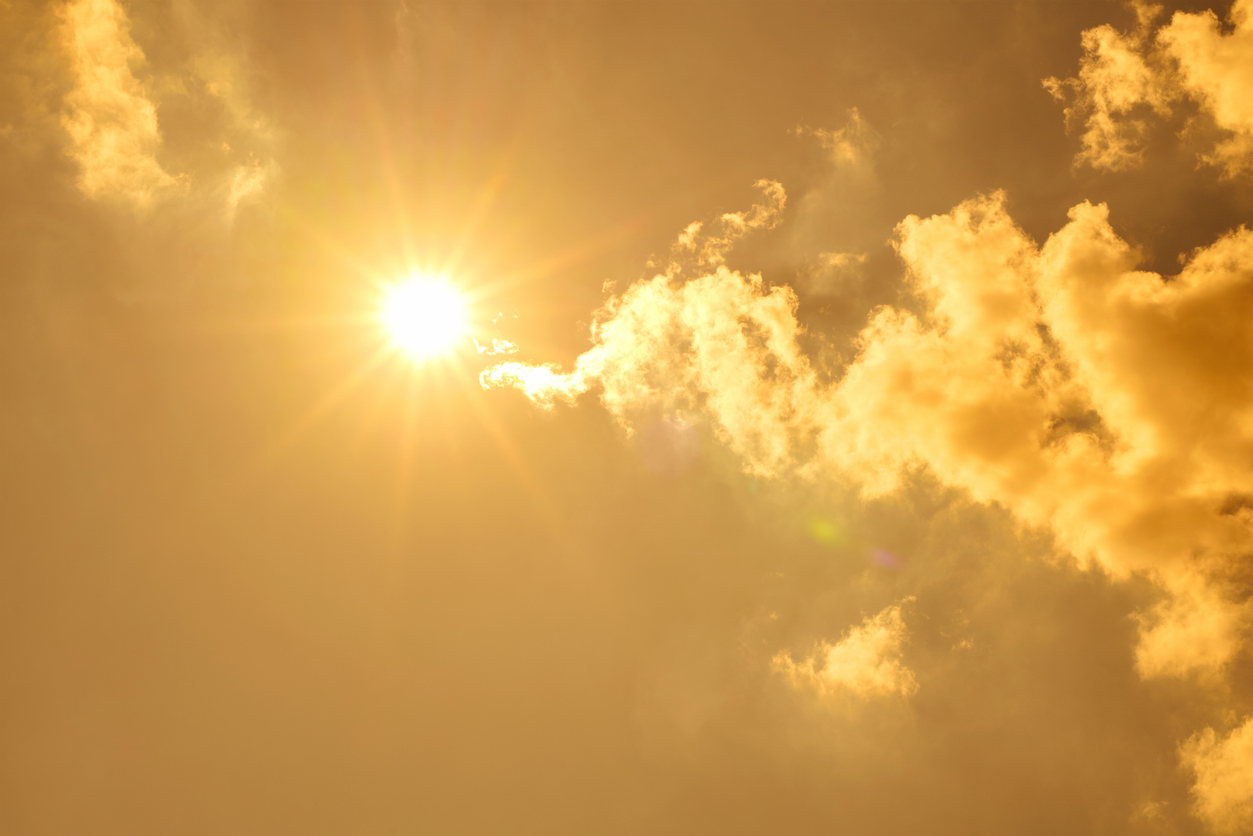Doctors explained that UV radiation can suppress the immune response, making people more vulnerable to infection.
Published Mar 21, 2025 | 10:04 AM ⚊ Updated Mar 21, 2025 | 10:28 AM

Cyclone Montha, which recently crossed the Bay of Bengal, disrupted the easterly flow by drawing it away from the Tamil Nadu coast.
Synopsis: The IMD issued high UV index warnings for Kerala. Doctors explained that UV radiation can suppress the immune response, making people more vulnerable to infection and it may also lead to skin cancer.
The India Meteorological Department (IMD) on Thursday, 20 March, issued a red alert for the Kollam district in Kerala, citing extreme heat and dangerously high ultraviolet (UV) radiation levels. Meanwhile, yellow alerts have been issued for the Pathanamthitta, Kottayam, Thrissur, Palakkad, Kozhikode, Kannur and Kasargod districts where temperatures are soaring.
The Kerala State Disaster Management Authority (KSDMA) and International Centre for Free and Open Source Software (ICFOSS) reported high UV index levels in several locations across Kerala over the 24 hours preceding the warning.
A release from the authorities said that Kottarakkara, Konni and Munnar recorded a UV index of 10, while Changanassery, Chengannur, and Ponnani registered nine. Thrithala in Palakkad reported eight.
Meanwhile, the mercury is set to touch 38-degree Celsius in Palakkad, 37 degree Celsius in Kolam and Thrissur, and 36 degree Celcius in other affected districts; experts warn that it is not just the heat but the UV index that poses a serious health threat.
The UV index ranges from 0 (minimal risk) to 11+ (very high risk).
Speaking to South First, Dr Sindhujaa Sreekanth S, a Consultant Cosmetic Dermatologist at Trustwell Hospitals in Bengaluru, said a high UV index signifies elevated levels of ultraviolet radiation from the sun, which can pose significant risks to skin health.
“This is especially true in people with light-coloured skin, wherein they can have skin burns within just five minutes of exposure to high UV rays or index,” she said.
She said that extended exposure to UV rays could damage skin cells, leading to sunburn, accelerated skin ageing and making an individual look aged vis-a-vis their actual age, and ever more critically an increased likelihood of skin cancers like melanoma, squamous cell carcinoma or basal cell carcinoma.
Dr Narayana Subramaniam, Head and Neck Oncologist at Sparsh Hospital in Bengaluru, had earlier told South First that “UV exposure is the most common cause for skin cancer in the world. The highest incidence is in Australia, where the impact of the harsh Australian sun on the European descent population has resulted in an epidemic of skin cancer.”
He said that skin cancers in India used to be relatively rare because the high levels of melanin pigment in the skin mitigate the harmful effects of UV rays. “However, skin cancers now are on the rise,” Dr Subramaniam said.
Meanwhile, Dr Veerabhadraiah, an ophthalmologist at Bangalore Netralaya, said excessive UV exposure could even lead to cataracts, corneal burns and long-term vision damage.
Doctors explained that UV radiation can suppress the immune response, making people more vulnerable to infection.
Children, the elderly, and outdoor workers are at increased risk of sunstroke, and dehydration which further worsens the situation amongst these people. Meanwhile, certain populations such as individuals with albinism and nystagmus face even greater risks.
Dr Prachi Ganesh, a dermatologist from Bengaluru, said people with a genetic condition called albinism — who already have a reduction in melanin production in the skin, hair and eyes — are at risk of exposure to high UV radiation.
“These people have little or no natural protection against UV radiation. This makes them vulnerable to severe sunburns even with brief exposure. Their irises and retinas are extremely sensitive to sunlight and a high UV index can damage their eyes. Also, they have a higher risk of skin cancer due to the lack of melanin’s protective role,” she said.
Similarly, those with nystagmus, a condition that causes involuntary eye movements, often experience heightened light sensitivity. “Bright sunlight and high UV radiation can worsen vision difficulties, cause discomfort, and impact daily activities,” Dr Prachi added.
Meanwhile, Dr Sindhujaa warned that even people with light-coloured skin or a history of sunburns are particularly vulnerable.
It should be noted that governments worldwide are addressing these risks by launching public health campaigns to raise awareness about the dangers of UV exposure.
They provide real-time UV index alerts and recommendations for sun protection through advanced information on weather services and forecasts.
Governments and doctors stress the use of broad-spectrum sunscreens, promoting protective behaviours like wearing hats, sunglasses, and long-sleeved clothing. In addition, they highlight limiting sun exposure, especially during peak UV hours — 11 am to 4 pm.
Authorities are also recommending fishermen, bikers and those with existing health conditions to take extra precautions. “Mountainous and tropical areas often experience higher UV levels, which can be intensified by reflective surfaces like water and sand,” a government release stated.
Precautionary measures against UV exposure:
With the UV index expected to reach extreme levels, authorities have issued strict precautions:
For real-time UV updates for residents of Kerala, one can check the Kerala UV Monitoring System. People are also advised to perform skin examinations and consult a dermatologist for skin screenings to catch early signs of skin cancer.
(Edited by Muhammed Fazil.)
